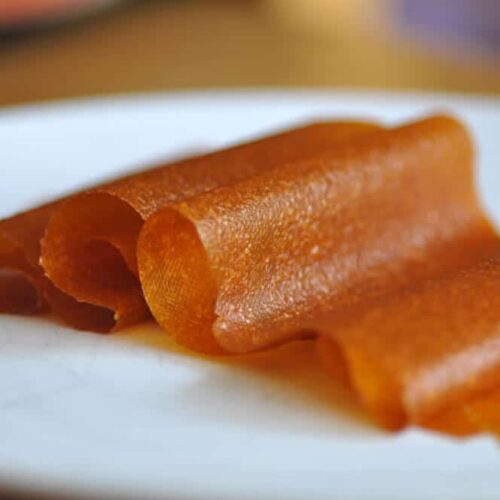Apricots are always the earliest stone fruit to come into season, and for many people, their arrival signifies the beginning of summer.
Apricot Nutrition
Apricots are an excellent source of beta-carotene, a very good source of vitamin C, and a good source of potassium. They even contain a little tryptophan, which is a difficult, but essential amino acid to get in your diet.
Apricots also contain phytochemicals called carotenoids, which are compounds that give red, orange and yellow colors to fruits and vegetables. The powerful antioxidant Lycopene is one of the carotenoids found in apricots.
Apricot seeds, also called “kernels,” are also edible and taste wonderfully like almonds. Some people think that apricot kernels help fight cancer. Oil extracted from the seeds is used in cooking and also makes a wonderful skin care oil.
Apricot Selection and Storage
Apricot season in the U.S. runs from May to August. Look for fruits with a rich orange color or even a blush of pink, and avoid pale and yellow fruits. Apricots should be slightly soft. If they are too firm, they have not been tree-ripened, and tree-ripened fruits always taste best and have the most nutrition.
Wash fresh fruits gently in cold water and pat dry with a soft cloth. Add fresh apricot slices to lunchboxes, salads and cereals, make them into jams, syrups and brandy, or simply sun-dry them and chop them into raisin-size pieces to use in baked treats.
One of the easiest and most kid-friendly ways to preserve fresh fruit is to make it into fruit leather. But since fruit leathers can be very sweet and hard on the teeth, I thought I would bulk up the nutrition a little by culturing the fruit first, so it had a nice tangy taste and a healthy dose of probiotic bacteria for oral and digestive health.
The Importance of Cultured Foods
Eating cultured or fermented foods is the best way to restore and maintain our important gut flora. Without a healthy gut microbiome, we can experience digestive troubles and weight gain, autoimmune diseases, skin problems, and even depression and neurological issues.
Fermented foods like sauerkraut, real sourdough bread, kefir, or homemade yogurt should be an important, daily part of every whole food diet, especially for kids. But getting these types of foods into kids regularly can sometimes be tricky.
This lacto-fermented fruit leather recipes gives kids the sweet treat they love, but with enough probiotics to keep their guts—and their parents—happy.
Here’s how to make cultured probiotic fruit leather:

Fermented Apricot Fruit Leather
Ingredients
- 2 to 3 pounds fresh apricots, or other organic fruit
- 1 tsp. sea salt
- 1/8 to 1/4 tsp. ground cinnamon, to taste (or sub cardamom, nutmeg, etc.)
- raw honey, to taste (or sub maple syrup, stevia, Rapadura, etc.)
- 1/2 packet vegetable starter culture, (OR 2 Tbsp. whey)
Instructions
Culturing the Fruit:
- Prepare the fruit (core apples, remove unwanted seeds or skin, etc.) and cut into pieces.
- Process the fruit in a blender, food processor or through a food mill until the mixture is smooth.
- Mix in the salt, spices and sweetener, to taste.
- Prepare the starter culture according the instructions that came with it, then mix it into the fruit mixture. If using whey, add it now.
- Wrap the jar in a towel to block out light and allow the jar to sit in a warm spot (70-80°F) for 7-10 days.
- Be careful when removing the jar lid, because pressure may have built up.
Drying the Fruit Leather:
- Line dehydrator trays (or baking sheets if using the oven) with sheets of unbleached parchment paper or silicone dehydrator sheets.
- Spread the fruit mixture evenly and very thickly on the sheets. If the mixture is too thin, strain it through a nut milk bag, tea towel or tight weave cheese cloth to thicken it up. The strained juice is delicious and contains beneficial bacteria from the culturing process.
- Set your dehydrator (or oven) for 110 degrees and allow the fruit leather to dry for 8-24 hours. (Don’t set it any higher than 110, or you’ll kill the beneficial bacteria you just cultured!) The exact length of time will depend on the thickness of the mixture, so be sure to check on it regularly.
- The fruit leather is done when it is no longer sticky.
- Peel the leather away from the parchment or silicone sheets and tear it into strips.
- Store in an airtight container and keep in the fridge for lasting freshness.














